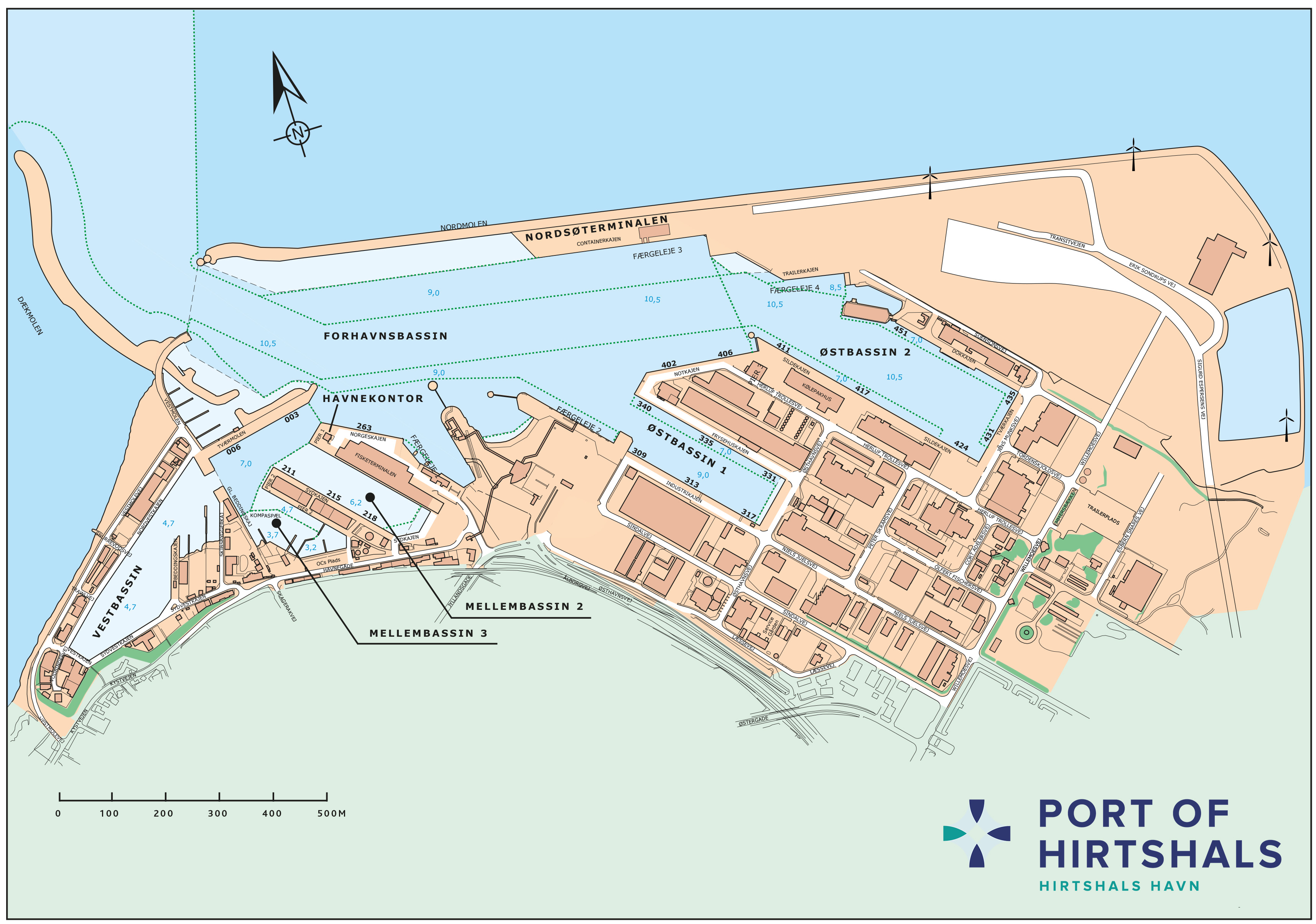Navigation information
Weather conditions
Information about the current wind, wave and water level conditions at Port of Hirtshals can be obtained by calling Port of Hirtshals on VHF channel 12 and 16 or looking at the weather here
The port
Port of Hirtshals consists of the following basins:
- Outer port basin – incl. ferry berth 3 and ferry berth 4
- East basin 1 – incl. ferry berth 2
- East basin 2 – incl. ro/ro ramps
- Western port basin - including slipway facilities
- Middle basin 1 – incl. ferry berth 1
- Middle basin 2 - Auction basin
- Middle basin 3 -
- Western port basin
Entrance
The entrance to Port of Hirtshals is market as follows:
- A red light buoy and a yellow wave recorder are placed approximately 0.5 nautical miles NNE of the breakwater. A yellow light buoy is placed NE of this as a marker buoy for the wave recorder.
- Two green light buoys are placed approximately 0.2 nautical miles NNW and 0.3 nautical miles NW of the breakwater.
Range lights
The range lights at the entrance to Port of Hirtshals lie in the direction 166°. The range lights are furnished with red-painted triangle top markings, which at night appear as luminous triangles.
See also official pilot manuals.
Water level
The difference between low tide and high tide at mean springtide is usually 0.3 meters.
Westerly gales can cause a rise of up to 1.5 meters, and easterly gales can cause a low of up to 1.0 meters.
High tide constant to London Bridge: +2 hours 11 minutes.
Current
The current across the port entrance is determined by the wind. The current flows strongest and most frequently west to east, and can in certain situations exceed 3 knots.
As guideline can be stated:
- Winds from directions between 020° and 180° result in a westerly current
- Winds from directions between 200° and 360° result in an easterly current
Changed bottom conditions can result in unpredictable and difficult current and wave conditions.
Fog signal
A fog signal is sounded from the break water head, when visibility is poor.
A fog signal is sounded with a note every 15 seconds.
Navigation
The port is ice-free and can be navigated day and night around the clock.
Before docking, ships should contact the port officer at Port of Hirtshals on VHF channel 12 or 16 for information about wind, weather and wave conditions as well as the traffic situation. Storms can cause deposit of sand in the entrance. Therefore, the entrance has been deepened to excessive depth, and the sanding will therefore cause navigation problems in extreme situations. In the event of navigational problems, the port officer will automatically inform about this in connection with arrival at the port.
Vessel sizes
The size of the largest vessels that can navigate the port depends on the vessel type. This means that the port can be navigated by ferries larger than e.g. container ships.
Under normal conditions, the port is navigable by ferries over 200 meters in length and with a draught of approximately 7.0 meters.
The size of the largest vessels that can navigate the port depends on the current wind, current and wave conditions, as well as the water level and the depth conditions.
If it is considered relevant, the port can arrange navigation simulations.

